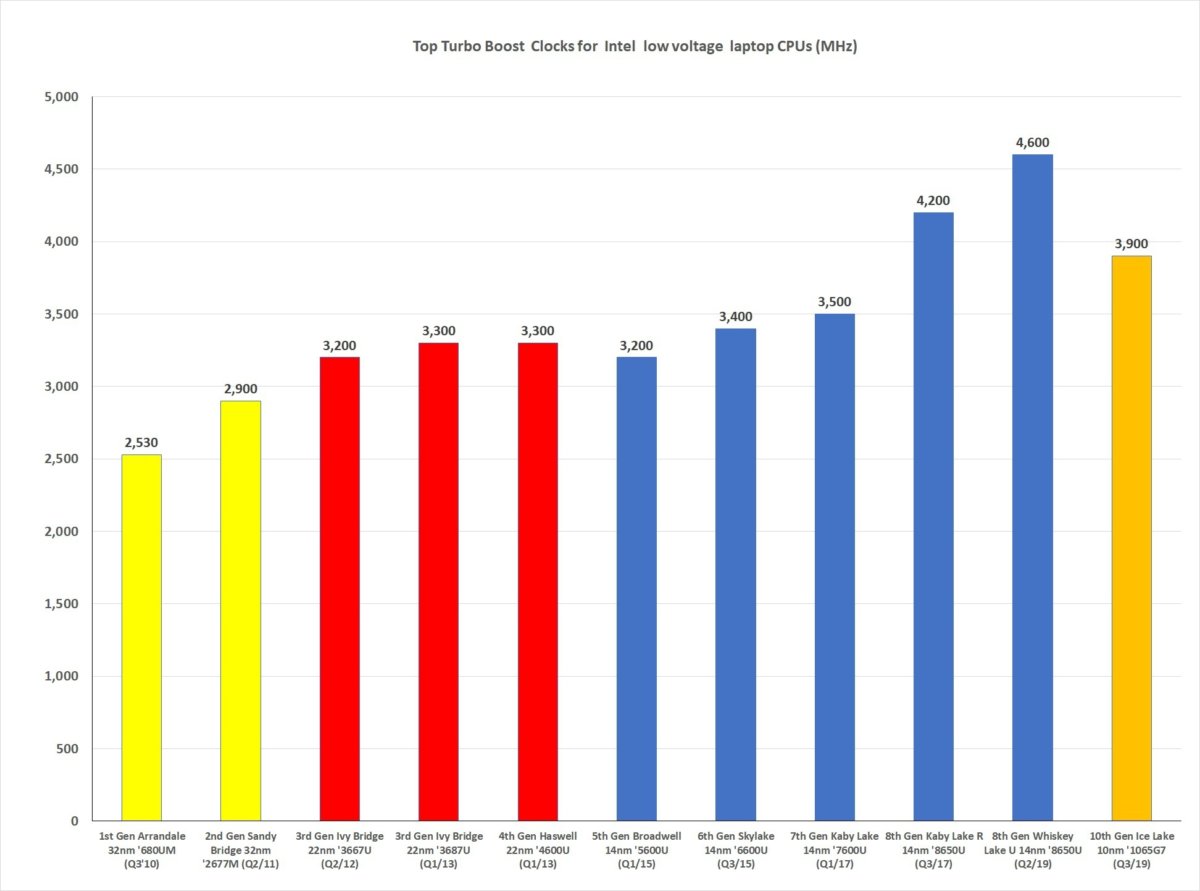Despite what’s been stated for years about CPUs, megahertz nonetheless issues. So simply how a lot do you have to be freaked out on the lower clock frequencies of Intel’s new 10th-gen Ice Lake CPUs? The reply goes past easy numbers.
The challenge, in fact, is the lackadaisical high clock pace of Intel’s quickest 10th-gen Ice Lake Core i7-1065G7 CPU: 3.9GHz. Compared to the Eighth-gen Core i7-8565U’s 4.6GHz, the Ice Lake half is sort of 15 % slower. It provides up a full 900MHz over the much less frequent Eighth gen Core i7-8665U, too.
Although many issues contribute to a CPU’s efficiency, together with its micro-architecture in addition to thermal and energy constraints, general press previews (together with our personal early benchmarks) have been typically favorable contemplating—watch for it—Ice Lake’s lower clock pace. Still, the response from many has been alongside the strains of, “is that all you got?”
We seemed again by means of a number of generations of Intel’s low-voltage CPUs to suss out any patterns. For this chart, we take a look at the highest turbo clocks from the 1st-generation Arrandale Core i7-680UM to the 10th-gen Ice Lake Core i7-1065G7. We determined to focus on non-Iris graphics variations in addition to non-industrial chips. Iris graphics chips are likely to have larger TDP rankings. Industrial or business laptops additionally are usually barely bigger and have larger clocks (prone to justify the upper costs.)
Each of the bars under are color-coded for the modifications in Intel’s course of. We go from 32nm to 22nm, endure the lengthy pause at 14nm, and eventually get to in the present day’s 10nm.
Although we noticed a rise in clock speeds from the 2nd-gen Sandy Bridge to the primary Third-gen Ivy Bridge chips, there was a slight despair of clock speeds going from the 4th-gen Haswell CPUs to the Fifth-gen Broadwell CPUs. Still, that 700MHz drop from the Eighth-gen Whiskey Lake U to 10th-gen Ice Lake is noticeably steep.
 IDG
IDGThe regression in clock speeds from 14nm to 10nm isn’t essentially value getting freaked out over.
All of this, stated chip analyst David Kanter of RealWorldTech.com, isn’t actually a shock.
“The 10+ process used in Ice Lake is expected to have lower peak frequencies than the 14++ process used in Whiskey Lake,” Kanter stated.”In truth, the method is about 15 % to 20 % slower when varied course of know-how metrics, which carefully matches the product-level frequency loss you’re describing.”
One idea floating round means that Intel’s lengthy doldrum at 14nm is accountable. If Intel had shipped 10nm in 2017, it possible wouldn’t be competing with its personal chips as onerous.
“This was generally expected, but this is a complex comparison,” Kanter stated. “When Intel’s unique 10nm course of (for Cannon Lake) was delayed, the corporate started to closely optimize 14nm, ensuing within the 14++ course of, which makes use of barely totally different transistors from the unique 14nm or 14+ course of and is quicker at excessive voltage (e.g., ~1V). That gave us…
https://www.pcworld.com/article/3431219/why-the-lower-clock-speeds-on-intels-10th-gen-ice-lake-cpus-arent-a-disaster.html#tk.rss_all
